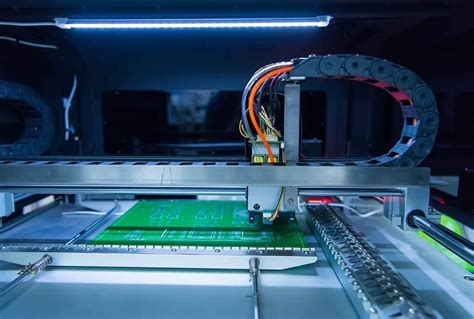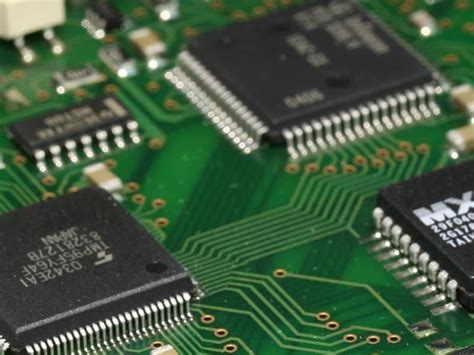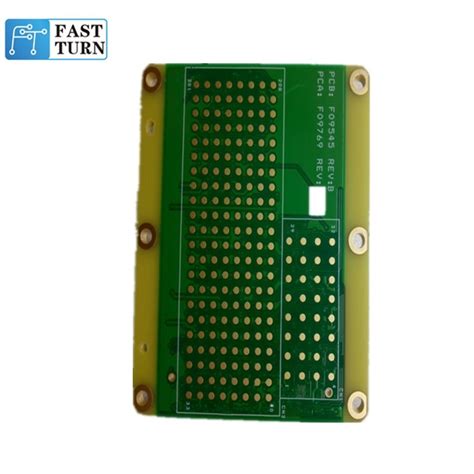Innovative Strategies for PCB Prototype and Assembly Success
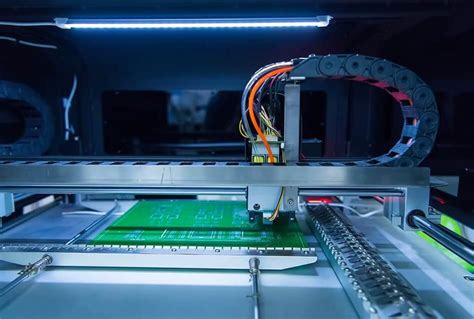
Key Takeaways
In the fast-paced world of electronics, understanding the fundamentals of PCB assembly and prototyping is essential for success. The integration of innovative strategies not only streamlines the PCBA process but also fosters improved overall productivity. Key takeaways include recognizing the significance of early-stage design considerations which can greatly impact costs and timelines. By implementing techniques such as rapid prototyping, teams can iterate designs more quickly and effectively, minimizing resource waste while enhancing the functionality of final products. Additionally, fostering strong collaboration among team members and stakeholders leads to more efficient workflows, ultimately ensuring that high standards are met during PCB prototype development. Embracing technological advancements in design tools serves to augment accuracy and efficiency in these processes as well. Keeping an eye on emerging trends also prepares manufacturers for future challenges and opportunities in PCB assembly, positioning them for long-term success in an ever-evolving market landscape.

Understanding the Basics of PCB Prototype and Assembly
The PCB prototype and assembly process is a crucial step in the development of electronic devices, serving as the foundation for bringing innovative designs to life. At its core, the process involves creating a physical representation of a circuit board that houses electronic components. This prototype allows designers to test theories and functionality, ensuring that all components work together seamlessly. During the pcb assembly, also referred to as PCBA, various techniques are employed, including surface mount technology (SMT) and through-hole assembly, each with its own set of advantages in terms of durability and space efficiency. One significant consideration in this phase is the material selection for both the substrate and components, which greatly influences performance metrics such as thermal management and electrical conductivity. Moreover, designing for manufacturability (DFM) is essential as it helps streamline production processes while minimizing errors during assembly. Understanding these foundational elements not only improves competence in PCB design but also enhances overall project efficiency and effectiveness. By paying close attention to detail during prototyping and assembly stages, teams can significantly improve their chances of achieving a successful outcome in their electronic design projects.
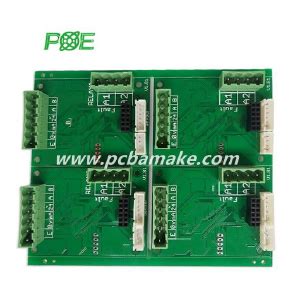
Key Challenges in PCB Prototype Development
The development of PCB prototypes is fraught with challenges that can significantly impact the overall success of pcba projects. One of the primary obstacles is managing the complexity of modern electronic designs, which often feature a vast array of components and intricate layouts. This complexity can lead to difficulties in assembling the prototype accurately, increasing the likelihood of defects. Furthermore, time constraints can exacerbate these issues, as rapid prototyping is often demanded in competitive markets.
A notable challenge lies in material selection, where using inappropriate materials can affect both prototype performance and compatibility with pcb assembly processes. Ensuring that these materials meet the required specifications for thermal management, reliability, and electrical performance adds another layer of difficulty.
To address these challenges effectively, teams must employ robust project management practices. Implementing structured workflows and utilizing simulation tools can mitigate risks associated with design errors. Additionally, fostering strong communication among team members and stakeholders aids in identifying potential issues early on.
"Effective communication is key to overcoming challenges in PCB development."
The integration of automated assembly technologies has also emerged as a strategy to counteract traditional pitfalls associated with manual processes. By embracing modern technology, organizations can enhance precision and decrease production times—ultimately leading to improved quality assurance in pcb assembly.
| Challenge | Potential Solution |
|---|---|
| Complexity of Design | Utilize design simulation tools |
| Material Selection | Research compatible materials at the outset |
| Time Constraints | Develop a detailed project timeline |
| Quality Control | Implement automated inspection processes |
In summary, recognizing these key challenges early allows electronic designers to implement innovative strategies that ultimately streamline their prototype development processes while maintaining high-quality standards for successful projects.
Innovative Techniques to Accelerate PCB Prototyping
Accelerating the PCB prototyping process is essential for companies aiming to bring their electronic designs to market swiftly and efficiently. One effective strategy involves using advanced 3D printing technology, which allows for rapid creation of prototypes directly from digital models. This method not only reduces lead times but also enables more complex designs that traditional methods may struggle to achieve. Additionally, implementing modular PCB assembly techniques, where components are grouped into functional blocks, can streamline the assembly process, reducing errors and enhancing productivity. Another key technique is adopting simulation software that permits thorough testing of designs before physical production, thereby identifying potential issues early in the design cycle. By employing these innovative methods, companies can significantly cut down on development time and costs associated with PCBA—ultimately leading to a more successful product launch. Emphasizing collaboration among design teams throughout the prototyping phase also fosters better communication and problem-solving, ensuring a smoother transition from prototype to production.
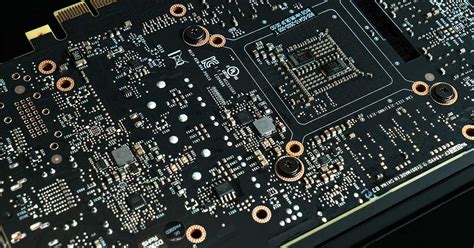
Cost-Effective Strategies for PCB Assembly
In the realm of PCB assembly (PCBA), implementing cost-effective strategies is essential for any organization aiming to optimize production without sacrificing quality. One effective approach involves streamlining the supply chain; by building strong relationships with suppliers and negotiating better rates for materials, companies can significantly reduce costs. Additionally, adopting lean manufacturing principles can help eliminate waste during the assembly process. This includes minimizing excess inventory and ensuring that production schedules align closely with demand, which reduces overhead costs. Automation plays a critical role as well; investing in advanced machinery can enhance precision and speed, making the PCB assembly process more efficient and less prone to errors. Moreover, utilizing simulation software prior to the physical assembly can help identify potential issues in design and functionality, thereby avoiding costly revisions after production begins. By focusing on these innovative techniques, organizations can achieve a balance of affordability and quality in their PCBA, ultimately leading to more successful electronic design projects.
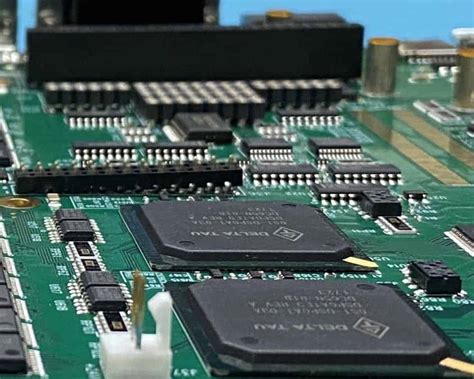
Quality Assurance Practices in PCB Production
Quality assurance is a cornerstone of successful PCB assembly and production processes. Implementing rigorous quality assurance practices not only ensures that the final product meets the necessary specifications but also significantly enhances customer satisfaction. In the realm of PCBA, several strategies can be employed to maintain and improve quality at every stage of production. First, thorough testing methods, such as Automated Optical Inspection (AOI) and X-ray inspection, are crucial in detecting defects early in the manufacturing process before they escalate into costly issues. Additionally, adopting a comprehensive quality management system that includes standard operating procedures (SOPs) allows for consistent monitoring and evaluation of production workflows.
Training staff on these quality standards is equally important, as skilled workers contribute greatly to reducing error rates during PCB assembly. Regular audits and reviews can help identify areas for improvement, guiding teams to fine-tune their practices continually. Moreover, incorporating feedback loops between design engineers and assembly teams promotes a culture of collaboration, ensuring that any potential design flaws are addressed before reaching mass production. By proactively focusing on these quality assurance practices, manufacturers can foster an environment where high-quality output is the norm rather than the exception, ultimately leading to greater operational efficiency and reduced costs in PCBA projects.
Leveraging Technology for Enhanced PCB Design
In the fast-evolving world of electronics, leveraging technology is crucial for achieving success in PCB assembly and prototyping. Advanced software tools, such as Computer-Aided Design (CAD) applications, have transformed how engineers design Printed Circuit Boards (PCBs). These tools facilitate the creation of complex layouts and help in accurately predicting performance outcomes. Furthermore, technology enables the efficient simulation of electrical properties before actual production, allowing engineers to identify potential issues early in the design phase.
Integration of Artificial Intelligence (AI) and Machine Learning (ML) can streamline the processes associated with PCBA by analyzing large sets of data to enhance decision-making and design accuracy. Automation within the manufacturing process also contributes to higher consistency, reducing human error during assembly and ensuring that each unit meets stringent quality standards. Additionally, adopting cloud-based platforms for collaboration allows teams to share designs in real time, fostering collaboration among various stakeholders involved in a project. By embracing these modern technological advancements, companies can significantly improve their PCB prototype and assembly processes, ultimately leading to a more efficient workflow and a more successful electronic design project.
Best Practices in Collaboration for PCB Projects
Collaboration is a cornerstone of successful PCB assembly and prototype development, enabling teams to share insights, resolve issues, and foster creativity. To maximize effectiveness during these projects, it is essential to establish clear communication channels that keep all stakeholders informed. Regular meetings and updates ensure everyone is aligned with the project’s goals, timelines, and expectations. Utilizing collaborative tools such as project management software can help streamline workflows and document decisions made throughout the PCBA process. Furthermore, it is beneficial to include diverse perspectives from various departments—such as engineering, design, and production—as this promotes a holistic approach to problem-solving. Encouraging team members to share feedback and ideas fosters an inclusive environment that can lead to innovative solutions for challenges encountered in PCB assembly. Additionally, developing strong relationships with suppliers and manufacturers supports seamless integration of components essential for high-quality production. By prioritizing effective collaboration strategies, teams can enhance efficiency while ultimately achieving superior results in both PCB prototype development and the subsequent PCBA phases.
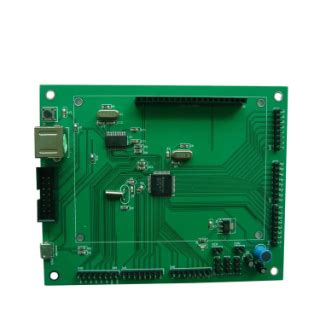
Future Trends in PCB Prototype and Assembly Techniques
As the electronics industry evolves, several trends are emerging that significantly impact PCB prototype and assembly processes. One of the most noteworthy developments is the integration of advanced automation in PCB assembly (pcba), which streamlines production and minimizes human error. Additionally, the adoption of 3D printing technology is revolutionizing prototyping by allowing designers to create complex geometries quickly and efficiently. This technology not only speeds up the prototyping phase but also reduces material waste, contributing to a cost-effective solution for manufacturers. Furthermore, the rise of smart manufacturing techniques is driving real-time data collection and analytics in assembly lines, promoting a more responsive approach to production challenges.
Moreover, the increasing demand for miniaturization in electronic components has led to innovations in design methodologies, enabling smaller yet more powerful PCBs. Innovations such as flexible PCBs are gaining traction due to their versatility and ability to save space in various applications. In the realm of sustainability, eco-friendly materials are becoming a focus for manufacturers aiming to reduce their environmental footprint while maintaining high quality standards in production.
These future trends indicate that organizations involved in pcba must stay agile and continuously adapt their strategies to integrate these advancements effectively. Embracing these innovations will not only enhance operational efficiency but also ensure higher quality outcomes, paving the way for successful electronic design projects that meet modern consumer needs and market demands.
Conclusion
In summary, achieving success in PCB prototype and assembly (commonly referred to as PCBA) requires a combination of innovative techniques and strategic planning. Teams working on electronic design projects must stay informed about the latest trends and best practices to streamline their workflow. By implementing cost-effective strategies in PCB assembly, such as optimizing production processes and utilizing automated technologies, companies can significantly reduce turnaround times while maintaining high-quality standards. Additionally, establishing a robust framework for quality assurance within the PCB production cycle ensures that potential issues are addressed proactively, safeguarding the final product’s integrity. Collaboration among teams throughout the prototyping phase not only fosters creativity but also enhances overall efficiency, paving the way for successful project outcomes. As we look towards the future, continuously adapting to new advancements and methodologies will be key in driving further innovations in PCB prototyping and assembly processes. Embracing these strategies will undoubtedly aid manufacturers in conquering challenges while delivering superior electronic solutions to meet a dynamic market’s demands.
FAQs
What is PCB assembly?
PCB assembly, often referred to as PCBA, is the process of attaching electronic components to a printed circuit board (PCB) to create functional electronic devices. This step is crucial for ensuring that the designed circuit operates as intended.
What are the common challenges in PCB assembly?
Common challenges in PCB assembly include ensuring component placement accuracy, managing soldering quality, and addressing thermal issues. Additionally, the complexity of components and circuit design can lead to production delays or defects.
How can innovative techniques enhance PCB prototyping?
Innovative techniques such as rapid prototyping methods, automated component placement, and advanced material selections can significantly improve the efficiency of PCB prototyping. These methods lead to faster iterations and better cost management.
What are cost-effective strategies for effective PCBA processes?
To achieve cost-effective PCBA, strategies such as bulk purchasing of components, optimizing manufacturing processes, and utilizing automated machinery can make a significant difference in reducing overall costs while maintaining quality.
How does quality assurance impact PCBA?
Quality assurance practices are essential in PCBA, ensuring high standards throughout production. Implementing rigorous testing procedures and adhering to industry standards minimizes defects and enhances product reliability.

